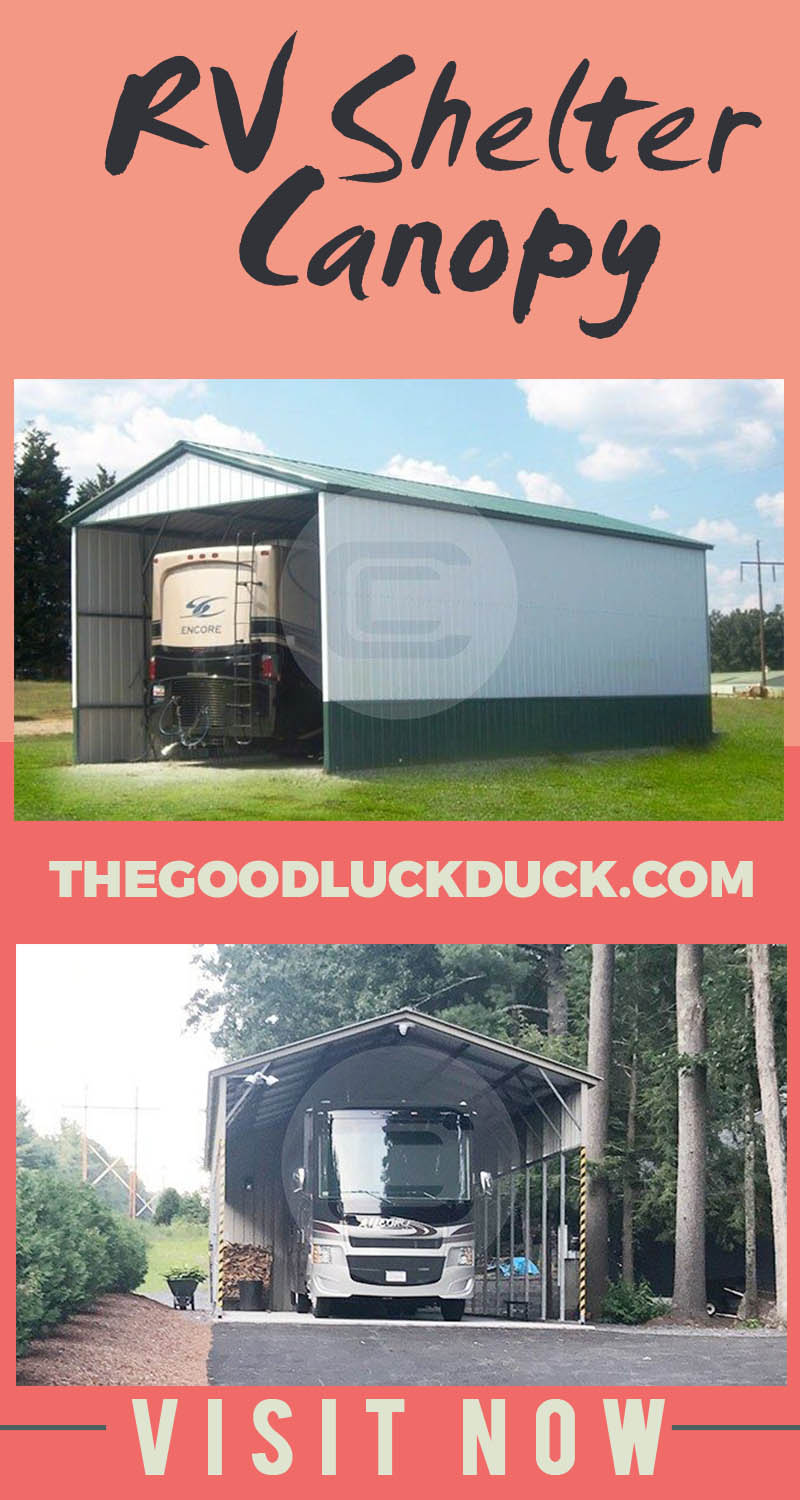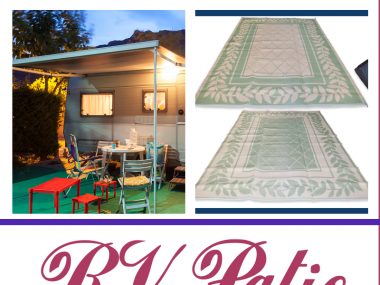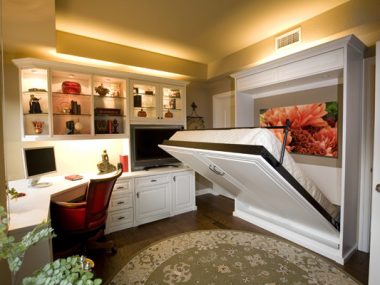RV Shelter Ideas -Having a shelter for your RV is a necessity, especially when you’re owning one, not just renting. Moreover, if you only take your RV out during holiday season, you’ll want a secure place to store your RV. If you don’t have an RV garage to store yours, having a carport is a must have. This is important as a part of maintenance. You don’t want your RV to be exposed under harsh weathers which will surely damage it. The exterior of your RV will suffer from high winds, hail, rain, and UV rays. They cause the RV to age faster and fade the paint. An RV shelter will also protect the RV interior. Without one, extreme heat may discolor the interior as well. As RV is an expensive investment, you should avoid all risks that may harm the vehicle.
While it’s possible to store your RV at an RV storage facility, it’s better to have your own shelter especially if you have the space to build one. It’s more convenient to have homemade RV shelters because you can take out your RV whenever you want. You don’t have to follow a schedule. In addition, you don’t have to spend your time going back and forth just to pick your RV. Another point is that you don’t need to keep paying monthly. Building a shelter may seem expensive, but continuously paying for a rent will be more expensive in total. Therefore, investing in an RV shelter should be something that RV owner has.
Contents
How Tall Does an RV Carport Need To Be
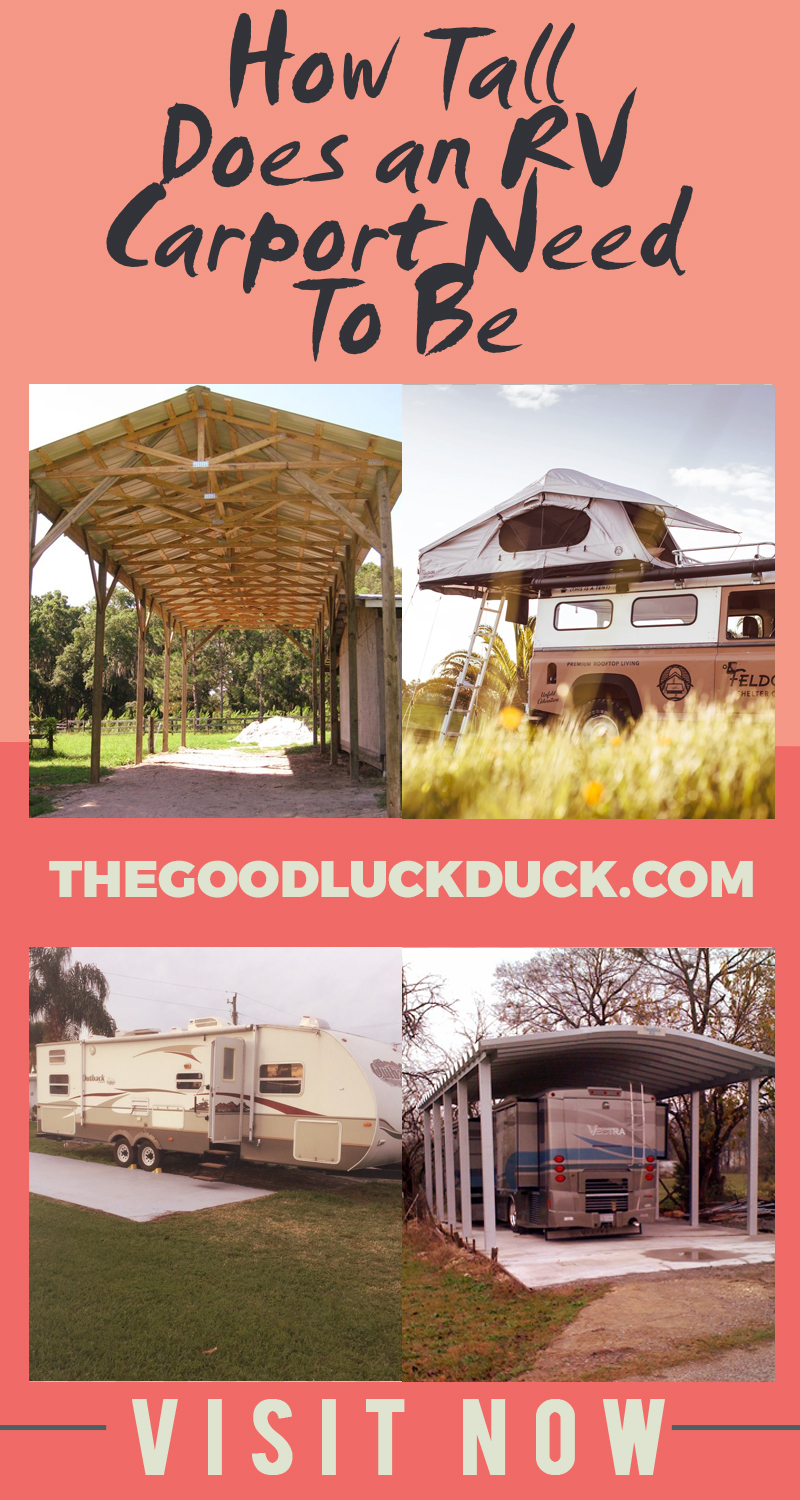
Sizing is important and it depends on what kind of RV that you have. You need to make sure it fits perfectly so it won’t be a waste of money. First of all, you need to know the measurement of your RV before figuring out the size of your RV carport. You have to know the width, length, and height of your RV. To make it fit, you need to give some room so the carport needs to be bigger. If you also want it to be a place for your equipment, that means you need to size it even bigger. There are standard widths and lengths to accommodate your RV. For example, 12’ is the standard width for an RV and 21’ is the standard length. For height, you need to know about side height. Side height ensures the RV can clear the lowest point of the carport.
Read More : RV Shelter Kitchen Accessories
How to Build an RV Shelter?
Building your own RV shelter is a good idea because it’s cheaper than buying one and paying people to install it. However, before you start building you need to have a permit first. You need to know the rules and laws at your neighborhood to know whether it’s fine to build it. You also need to have knowledge and experience in construction. While an RV shelter may look simple, inexperienced builder will risk building an unsteady and frail shelter. Moreover, you need to have a clear RV shelter plans so you won’t miss any step. Here are the basic steps in constructing an RV shelter:
1. Decide on the Design and Style

There are many things to consider before you start building an RV shelter. You need to decide what type of shelter you want and the cost that your budget can accommodate. For the materials, you can choose whether to have a wood or metal shelter. Your needs also need to be aligned with the roof and wall panel style. The options include roof-ony carports, carports with panels, and fully-enclosed garages. Another part of options include regular style roofs, boxed-eave style roofs, and vertical style. While deciding the design, you need to decide whether you want portable RV carports or permanent ones.
2. Set the Foundation

You need to have a solid foundation so your carport will erect strongly. Structure built upon concrete slabs is the way to ensure this. Firstly, you need to dig out the area of your RV shelter to pour the concrete in. It need to be approximately 6 inches deep and framed by a box made from wood around the perimeter of the structure. You can also do this by using post anchors. However, it’s still better to lock the posts into concrete. You need to make sure the top of the posts are at the same level. This balance is important for the structure to be sturdy.
3. Construct the Carport

It’s time for you to prepare the materials based on your measurements and design. This process will differ depending on the design that you choose, but there are basic steps that are required. You need to cut the frames and join them together with metal brackets. For the roof trusses, you need strong plywood or metal gussets in order to have them joined well. the construction of the roof differs depending on the style, with flat roof being the simplest. For the shelter to be sturdy, heavy duty stainless steel bolts and nuts are necessary to bolt everything together. By completing all of these steps, you will have a basic structure for an RV shelter. Finally, you can clean the surface with a cloth.
Read More : Best RV Awning Design Ideas
RV Shelter Design Ideas
RV shelter is available in various types and styles. For every design, it will save a particular purpose for the RV. Budget also plays a big rule whether settling on a simple or an elaborate RV shelter. It’s important to know all options that are available to have it tailored specifically for personal preferences. Here are design ideas to give inspiration for RV shelters:
1. Wooden RV Shelter
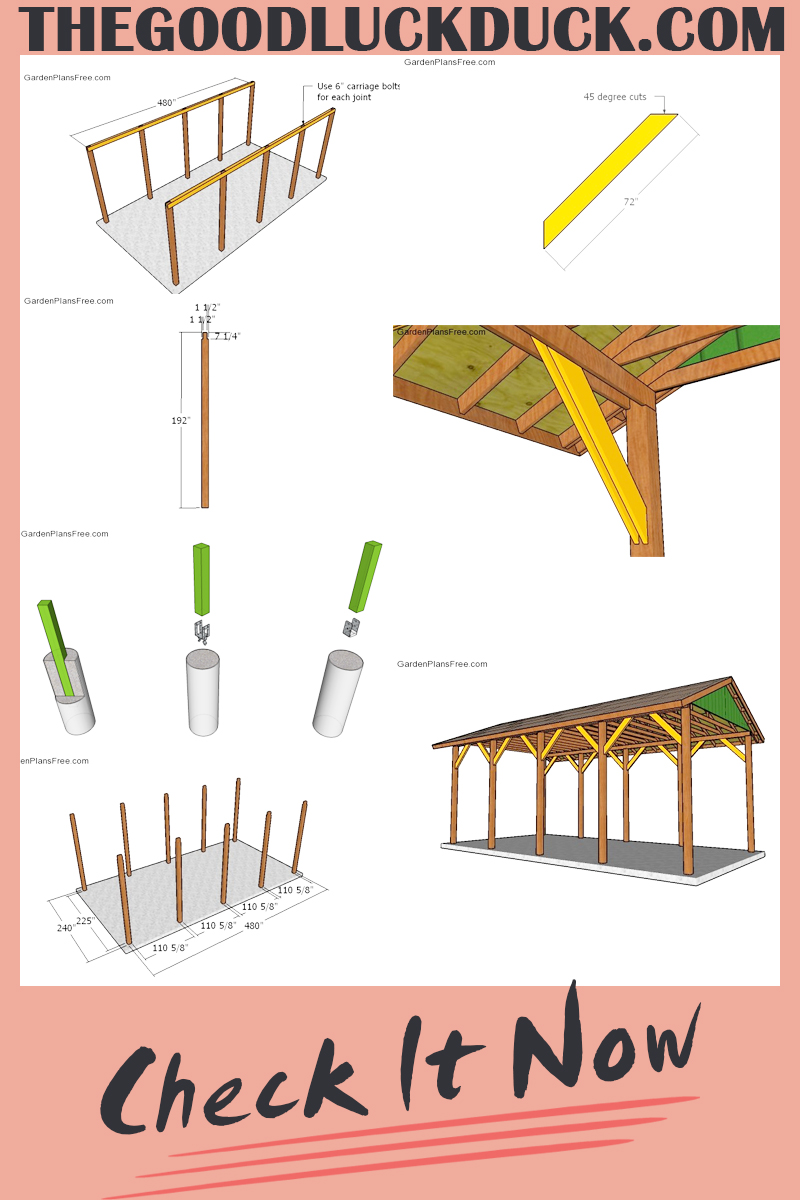
This is the cheapest option because it has the simplest design of all. Regular style has a bend transition from the roof the the side posts or legs and and only have trim on the ends of the units. Roof Panel Corrugated Ridge Orientation is horizontal as in front to back. Here are some models for this style. This is the best one so far RV Shelter ideas.
2. Shed Ideas RV Shelter Metal Carport
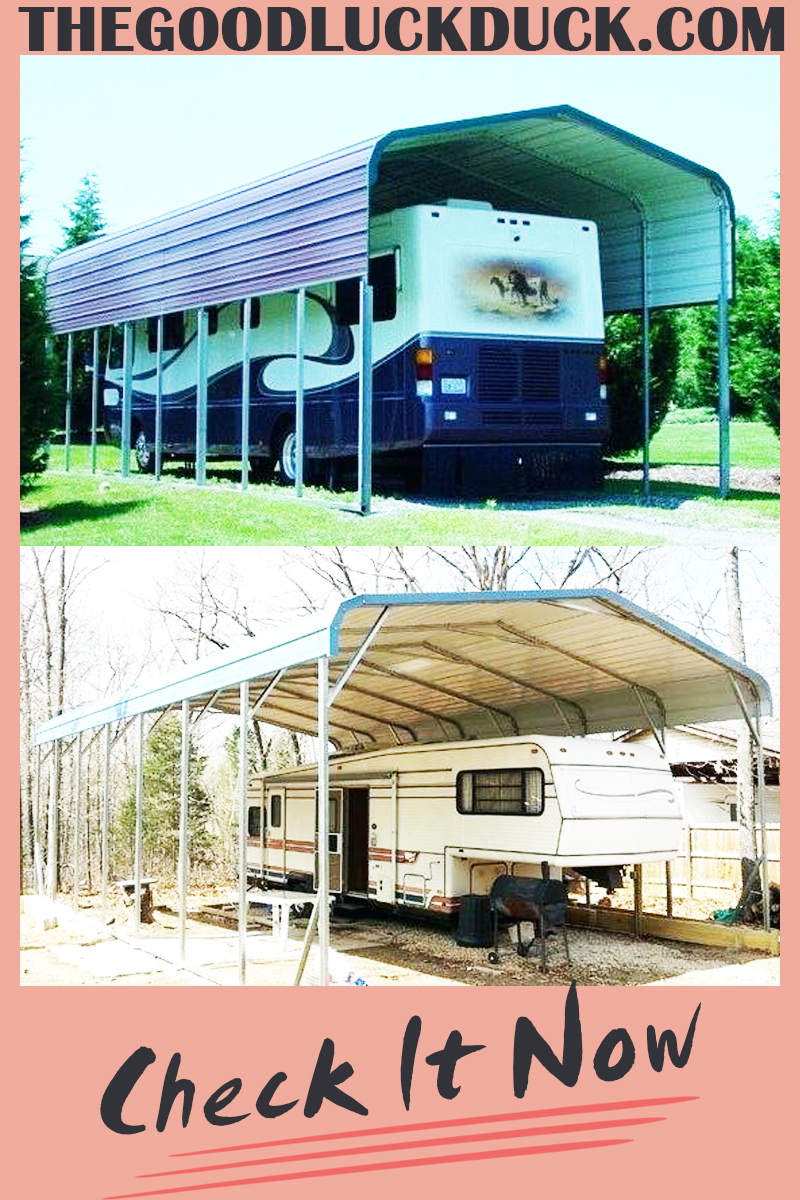
Metal RV shelters provide strong protection for RVs. It’s a popular material chosen to be the RV shelters. It comes in various sizes depending on what the RV owner deems fitting. It also comes in different designs and colors. Having one is a great investment and there are also cheap metal carports to accommodate people with limited budget.

This is a regular metal RV carport with no walls. This is the simplest model for this style and that also means the cheapest as well. Later, you can choose your own RV Shelter Ideas.

This model only has an enclosed wall on one side, while the other one is open with braces only.

This model has walls with all sides except for the front closed. This is the best around RV shelter ideas.

This carport doesn’t only offer shelter for RV, attached at the back is an enclosed storage to store equipments.
3. Vertical Roof Style

Vertical roof style is the best option for those who live in places that experience challenging and extreme weather conditions such as high winds and heavy snowfalls. With the vertical-oriented paneling, debris such as snow, leaves, and rain will slide off easily. The structure of this style provides the best structure with ridge caps and a hat channel installed. Therefore, the RV carport is sturdy and protected from being blown away. Here are some models for this style:

This RV carport is in vertical roof style with utility in the back. For the open space, it can be used as RV shelter. For the utility, it is fully-enclosed with vertically aligned paneling, providing an excellent shelter for traveling necessities, tools, equipment, vehicle, or other personal belongings. In addition, it also has two long vertical panels, one walk-in door, and four windows.

This unit has wide panels on both side walls and gables on each end. Moreover, it has a lean-to on the front side wall. The shelter is ideal for an RV and the lean-to is ideal to fit a car.

This model has closed sides. The unit is an all-vertical deluxe building. In addition, it has two gabled ends with L-trim.
4. A-Frame Style

A-Frame RV shelter is also known as boxed-eave style. The paneling is horizontally oriented. This style is suitable for places with moderate winds and don’t experience heavy rains or snow. A-Frame design enables to slow down water. Since it has horizontal patterns across the roof, runoff can be slowed down. As a result, the chances of flooding around the metal cover are minimized. Here are some models for this style:
This model has opened sides, with partial panels on the side. Another RV Shelter ideas that can fit with your house.

This A-Frame carport has one enclosed side. On the other side is panel. It also has garbled ends.

This model not only has a function as RV shelter, it also has an enclosed lean-to. It features A-frame roof, one extended gable end, one side panel, J-trim, and one side closed. For the lean-to specifically, it features one standard walk-in door and one roll-up garage door. This model is perfect for those who want to keep their RV secure under the shelter while also having a storage to place their equipments.
RV Shelter Canopy
RV shelter canopy is a flexible choice than the traditional wood framed carports. It’s also cheaper and easier to build. They are portable RV shelters because they can be erected on pads, steel rails, dirt, blacktop, wood post walls, and ecology blocks. It can be easily set up because it comes with a detailed assembly manual. The fabric being used for this is usually canvas. It’s a durable material that can withstand harsh weathers. Here are some models for this style:

This model has enclosed sides with windows on the sides. In addition, it can also be a tent for outdoor gathering, providing a friendly and cozy look with its windows.

This model is a portable peak style garage. The frames are made of steel, making the structure sturdy.

This is the basic model with no walls. With such simple design, this model becomes the cheapest option for RV shelter canopy. The frames are made of heavy duty galvanized sturdy steel with UV Resistant Poly roof. In addition, the material is easy to clean so it can always look fresh.

This mechanical commercial storage is a rhino shelter style. It has a mechanical roll up door. The steel frame is pre-drilled and precut for easy installation. The fabric is made of durable plyethylene fabric with heat welded seam construction. The fabric also offers long lifespan and prevents fading because it’s fire retardant and UV protected.
Read More : Recreational Vehicle Travel Interior Ideas
Frequently Asked Question
How tall does an RV carport need to be?
The height of the standard carport option on metal carports is 6 feet, with the height increasing to 8 feet for any structure 32 feet or larger. If you wish to enclose your carport in the future, consider getting the necessary height now so the structure is tall enough for the garage door to be installed.
How tall should an RV shelter be?
Class A motorhomes are usually 7-9 feet tall. Our metal RV covers have a minimum height of 12 feet, so almost all motorhomes have plenty of headroom. Whether there is adequate clearance up the sides is less important than if the roof can lift on its own.
Are RV carports worth it?
Carports protect your RV from rust caused by environmental conditions like snow, ice, and rain. A protective enclosure from destructive weather conditions like hail, falling trees, and more is provided. These benefits are provided by harsh weather elements like intense sunlight or UV radiation.
Conclusion
RV shelter is a must have to protect both interior and exterior of an RV. It provides protection from harsh weathers such as high winds, hail, rain, and UV rays. Without an RV shelter, the RV will age faster and suffer damages like fading paint and leaks. Since RV is an expensive investment, it’s really important to pay attention to maintenance. Repair will be more expensive than maintenance after all. By the time it happens, it will be too late then.
There are various ways to store an RV safely. Some people opt for renting a space at a storage facility because they think it’s expensive to build one. However, the accumulation of the monthly rent will surpass the cost of owning a personal and homemade RV shelter. Therefore, it’s better to invest on building one.
It’s important to note that RV shelters come in wide range and various designs and prices. From the simplest one with a purpose of sheltering an RV to ones with lean-to and utility. They also come in different materials such as canvas, wood, and metal. What makes it even more personalized is that most companies offer customization to suit every personal preferences and needs. It’s also possible to have a DIY, especially for those with experiences in construction.
With these many options and flexibility, it’s hard to find an excuse why an RV owner doesn’t have an RV shelter. It’s simply such a careless behavior that will most likely ruin their RV soon. In short, having an RV shelter is necessary and there are no worries of not being able to afford it since it comes in all accommodating options.


